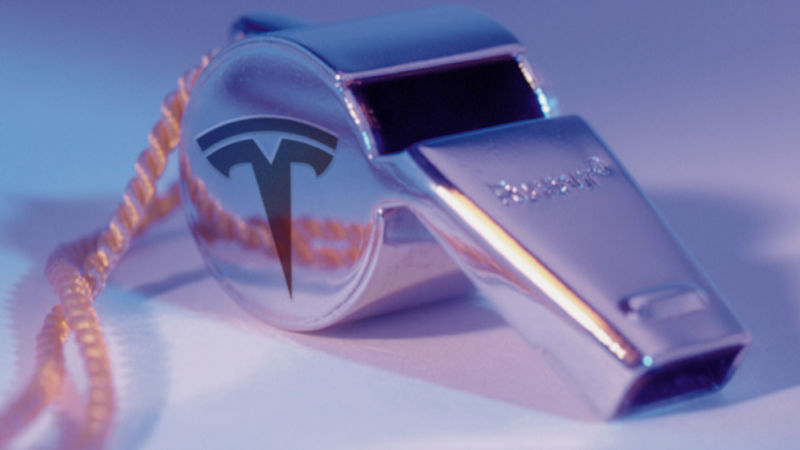
Getty / Aurich Lawson
In late September, Teslareleased a major software updatethat included a new feature called Smart Summon. It enables a customer to summon their car from across a parking lot with no one inside — though the owner is expected to continuously monitor the car from outside.
People immediately started testing the feature and documenting their experiences on social media. Over the last few weeks I’ve watched more than 100 YouTube videos of people testing out Smart Summon. I’ve also read dozens of comments on Twitter, Reddit, and Tesla forums discussing the new feature.
Smart Summon worked well enough for most owners, but a fair number of them experienced problems. Take well-known YouTuber Judner Aura, for example. He had his cousinwalk in front of his Tesla caras it turned out of a parking spot. The car got uncomfortably close to his cousin before Aura halted the test.
“I like it,” Aura concluded in his video. “It’s scary though. I’m probably gonna just show it off to people here and there, but I probably honestly wouldn’t rely on it to have the car come to me when I get out of the mall.”
This was a typical reaction. On the one hand, people agreed that Smart Summon was a fun technology demo and an exciting first step toward an autonomous future. On the other, many people questioned the safety of Smart Summon or just how useful the technology really was for daily use — at least in its current form.
Smart Summon mostly works
Smart Summon certainly has weaknesses (and I’ll discuss those in detail), but it’s important to first acknowledge that the technology worked in the vast majority of the more than 100 videos I viewed. I watched dozens of people successfully summon their cars from across parking lots without incident.
Last week,Elon Musk tweetedthat customers had already used Smart Summon 550, 000 times. By now it has probably had more than a million uses. During that time, there have only been a handful of minor accidents reported online — and I haven’t seen any reported injuries.
Tesla has taken a number of steps to encourage the safe use of Smart Summon. The technology only works if the owner’s phone is within 200 feet (60 meters) of the vehicle, and customers are encouraged to maintain a line of sight to the vehicle at all times. The owner must keep his or her finger continuously on a button in the smartphone app to keep the car moving — the moment the finger is removed, the car will stop.
A summoned car seems to have a maximum speed around six miles per hour. That’s slow enough that the car can stop almost instantly, and it also reduces the chances of serious injuries if a Tesla car were to hit a pedestrian.
Tesla has also programmed the system to be fairly cautious. A number of videos showed Tesla hesitating when confronted with scenarios that are complex or require squeezing through tight spaces. Tesla seems to have made the reasonable decision that it’s better to inconvenience people with excessive caution than to risk causing an accident.
When you add all these restrictions up — the limited range, the need for a line of sight to the car, and the cautious driving style — the practical utility of Smart Summon is fairly limited. Using Smart Summon will rarely get you to your car much faster than an old-fashioned walk across the parking lot, and walking is much less likely to irritate or inconvenience other drivers. A number of owners described the technology as a fun party trick rather than a practical day-to-day feature.
Of course, this is only the first version of Smart Summon. Tesla is aiming to gradually make the technology more capable over time — eventually allowing summons from longer distances and without human supervision. Tesla is undoubtedly harvesting data from today’s Smart Summon attempts to improve future versions of the software.
Smart Summon isn’t good at seeing obstacles on its sides
The most important goal for a system like Smart Summon is to avoid running into things. But at least two customers have reported serious damage to their cars as a result of using the technology.
In both cases, the damage occurred because the vehicle turned as it passed an obstacle and scraped the side of the car. Inone incidentcaught on video, a Tesla Model S exiting a garage scraped the side of the door. Another customer, a YouTube engineer,posted photosof damage to the side of his car after Smart Summon “drove into the parking structure pole.”
A third customerreported minor damagewhen his car unexpectedly swerved into the side of his garage door.
Inthis October 4 video,YouTuber Mark Myers tested Smart Summon in a challenging scenario: he parked his Tesla in a loading dock between a parked tractor trailer and a concrete wall, facing the loading dock. The position required the Tesla to back up to get out of the space.
The vehicle did manage to back out of the space, but for no obvious reason it veered toward the trailer as it did so. At one point, a passenger in the car described it as “within half a foot, a foot maybe” of the trailer.
In aTwitter videothat got widespread distribution, a Model 3 entered a travel lane in front of an approaching car — forcing the other car to slam on the brakes.
Teslas also seem to be worryingly aggressive (or maybe oblivious) when pedestrians are close to the side of the car. Twodifferentvideosshow men getting within a couple of feet to the side of the Tesla before the vehicle slammed on its brakes. A human driver almost certainly would have stopped sooner.







GIPHY App Key not set. Please check settings